

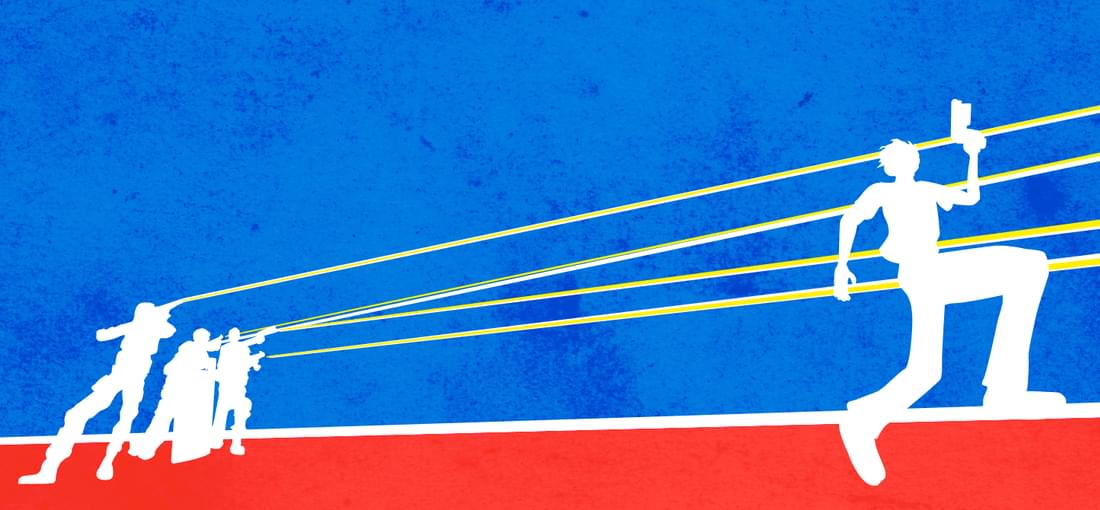
For a game that can be finished in under 30 minutes (if your reflexes are particularly good), ‘Speed Limit’ delivers virtually non-stop exhilarating fun. This multi-genre shoot ’em up title, presented in neo retro graphics reminiscent of those in 1980s and 1990s video games, combines several popular action video game genres from that era into one seamless experience. Transitions from side-scrolling shooter to racing/shooting to aerial combat are done with insane stunts that only a video game character can pull off. Seeing and playing crazy, cool stuff like this make me feel like a kid who just discovered violent games. Similar to games I’ve played in the ’80s and ’90s, this game is challenging enough at normal difficulty, with me feeling relieved and accomplished once I’ve figured out the winning strategy. ‘Speed Limit’ wastes no time in getting and keeping you moving. Even resuming from the last checkpoint upon dying doesn’t take long, and you’ll be back up and shooting enemies almost right away. You’ll probably die a lot in this game the first time you play because the action does get too frantic, and your view may be obscured. I wished that there were more checkpoints so I didn’t have to repeat certain portions so many times. I’m not very good at games that put my reflexes to the test, but I managed to finish this game in about 3 hours at normal difficulty, and in about an hour or so at easy. There are also the Arcade, as well as unlockable Infinite and Neon modes that you can play should you want to improve your skills, beat your scores, and seek further challenges. If you’re the type who just plays a game once for the story, you probably won’t get much mileage out of this title. ‘Speed Limit’ is a very easy game to recommend. It tests your skills and patience, and will be rewarded with achievements that you’ve (sometimes obliviously) worked for. This game deserves a place in your game collection, and it has become one of my favourite titles in mine.
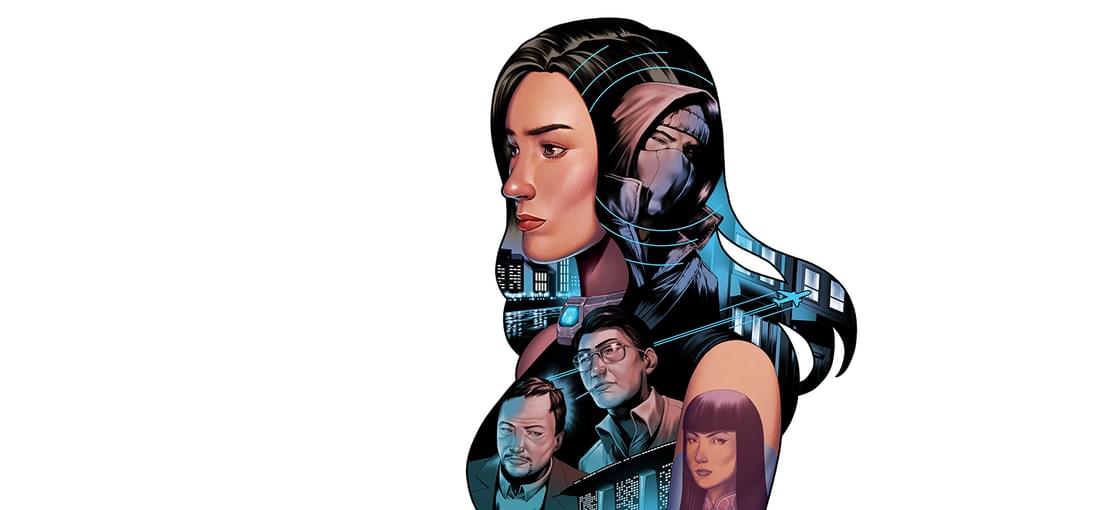
‘Chinatown Detective Agency’ is a detective point-and-click adventure game with an engaging story, with plenty of interesting cases to solve. After a protracted tutorial, you get to choose one of 3 clients, each of whom will temporarily steer the story into a new direction, with different sets of puzzles. Narratively, this is where ‘CDA’ is most fun. Sadly, all branches return to a singular point in the main story. From that point on, the only difference is the supporting cast. Still, I really enjoyed how ‘CDA’ incorporated the ethnic diversity, dialects, cultures, and societal issues of Singapore, the game’s setting, into the story. Tossing in some globetrotting à la ‘Where in the World is Carmen Sandiego?’ made the adventure grander. I really liked the game sharing a brief history (and expanded fictional future history) of each city and neighbourhood you visit. I like ‘CDA’, but I don’t love it. I found it an overly ambitious game that lacks polish. Some locations and mechanics felt underused or unnecessary, and almost all of the game’s puzzles require you to alt-tab out of the game so you can search the Internet for clues or solve the problems. It’s a neat idea, but pulling players away from the game’s environment too much isn’t. Plus, the version I played (1.0.17) was buggy. There were mismatches between subtitles and spoken dialogues, missing voice acting in parts, uneven sound levels, missing city description, inappropriate sound loops, grammatical and spelling errors, and so on. The worst part of ‘CDA’ is that you can only save at the end of a case, so quitting mid-case or failing means starting a case from the beginning. In spite of its obvious flaws, ‘CDA’ is still a game worth playing because the good parts truly outshine the bad. It might have missed the bullseye, but not by so much that it becomes a bad game. Overall, ‘CDA’ is a fun detective adventure game that tests your mental prowess, or at the very least, search engine skills.

This is my review of the full game, which didn't post on the game's page. ‘The Pedestrian’ has a simple premise: get your person from Point A to Point B. Along the way, there are platforming puzzles to solve, involving toggling switches, moving boxes, retrieving keys, connecting/rearranging/reconfiguring signs to reach seemingly inaccessible places, and so on. To keep gameplay interesting, each level introduces a new mechanic, and the background shifts from one part of the city to another. These visual and experiential indications are effective in denoting progress. Game difficulty increases gradually, making ‘The Pedestrian’ easy to learn and enjoy. It does become more challenging – at least for me anyway – in the second last level. I often just stepped away from the more difficult puzzles for a moment to clear my head, and would find or stumble upon the solutions later on. The game is great that it’s easy to pick up and quick to resume. The only part of ‘The Pedestrian’ that didn’t work for me was the last level, which throws a pretty big wrench in the gameplay. The change in perspective is a neat idea on paper, but was too drastic and unexpected of a change for me. Plus, the unchangeable control scheme isn’t conducive to the new way of solving the puzzles – again, for me anyway. I’m sure there will be players who will enjoy the last level. In spite of my complaints, it wasn’t a deal breaker for me, and I could see its appeal. If you love solving puzzles, you’ll love ‘The Pedestrian’. It’s a puzzle game with just enough frills to keep gameplay entertaining and captivating. Sadly, the game is hardly replayable. Upon completing it, you can’t select levels to retry specific puzzles; you’ll have the start from the beginning. It also lacks time challenge and speedrun features that you might expect from a puzzle game like this. It may be a game with basic features, but it’s also one with well-constructed puzzles and level designs that elevate it to the next level.

‘The Pedestrian’ has a simple premise: get your person from Point A to Point B. Along the way, there are platforming puzzles to solve, involving toggling switches, moving boxes, retrieving keys, connecting/rearranging/reconfiguring signs to reach seemingly inaccessible places, and so on. To keep gameplay interesting, each level introduces a new mechanic, and the background shifts from one part of the city to another. These visual and experiential indications are effective in denoting progress. Game difficulty increases gradually, making ‘The Pedestrian’ easy to learn and enjoy. It does become more challenging – at least for me anyway – in the second last level. I often just stepped away from the more difficult puzzles for a moment to clear my head, and would find or stumble upon the solutions later on. The game is great that it’s easy to pick up and quick to resume. The only part of ‘The Pedestrian’ that didn’t work for me was the last level, which throws a pretty big wrench in the gameplay. The change in perspective is a neat idea on paper, but was too drastic and unexpected of a change for me. Plus, the unchangeable control scheme isn’t conducive to the new way of solving the puzzles – again, for me anyway. I’m sure there will be players who will enjoy the last level. In spite of my complaints, it wasn’t a deal breaker for me, and I could see its appeal. If you love solving puzzles, you’ll love ‘The Pedestrian’. It’s a puzzle game with just enough frills to keep gameplay entertaining and captivating. Sadly, the game is hardly replayable. Upon completing it, you can’t select levels to retry specific puzzles; you’ll have the start from the very beginning. It also lacks time challenge and speedrun features that you might expect from a puzzle game like this. It may be a game with basic features, but it’s also one with well-constructed puzzles and level designs that elevate it to the next level.
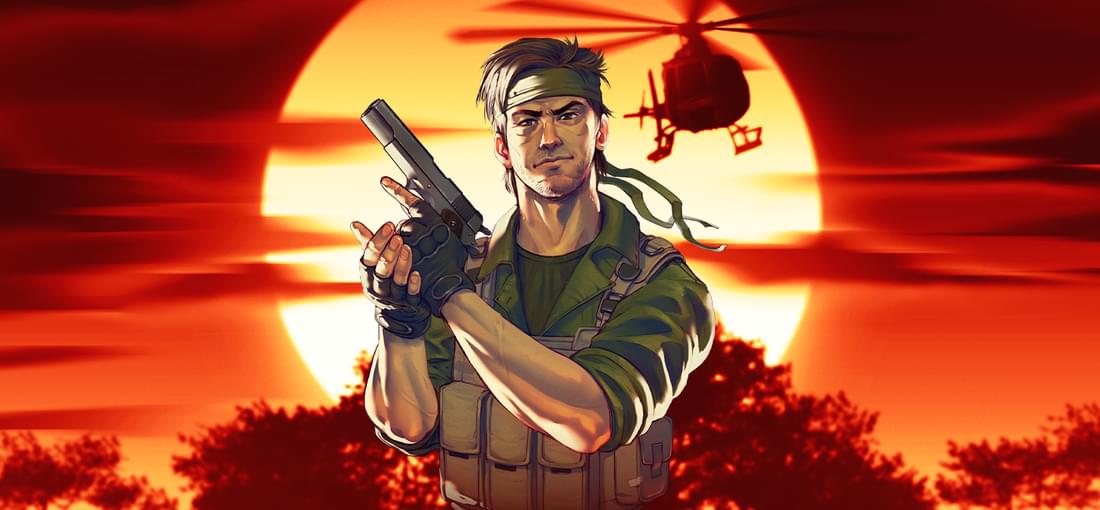
‘UnMetal’ may be a parody of Konami’s first ‘Metal Gear’ game, but it’s an excellent stealth action title on its own. The gameplay mechanics are tight and varied, with every level introducing a new challenge or tool; the pixel art graphics are superbly done and colourful; the English voice acting is spot-on; and puzzles are well integrated into the stealth action. Best of all, the story is captivating, absurdly funny, and full of surprises. Developer Franciso Tellez de Meneses has fantastic comedic timing, which is not easy to implement in a video game. Just because it’s a parody, however, the game isn’t easy. In fact, ‘UnMetal’ is delightfully challenging. I started the game at Hard difficulty level, only to be humbled during the first boss fight. Even Normal difficulty level proved too much when fighting the second boss. I eventually finished this game at Easy difficulty level, which still offered sufficient challenge. Despite all my praise for this game, I did find it a bit annoying that some puzzles require sheer trial and error to solve. This means resuming at the most recent save point, which may be some distance away from where you failed. Plus, the game doesn’t hit its full stride until Chapter 3. At 10 chapters long, it’s not so bad, but I did wish it’d become more familiar earlier. When I started ‘UnMetal’, I didn’t expect it to become one of my favourite games, but it did. I loved its solid stealth gameplay, humour, and surprises. This is a game that I find very easy to recommend, especially to anyone who enjoys stealth action games, and appreciates satirical and ironic humour.

The Big Bang and the genre of noir are two ideas that don’t typically go together. Yet, the developers at Feral Cat Den think they do, and the result is ‘Genesis Noir’. In this game, Feral Cat Den presents a noir tale about the creation of the universe, the evolution on Earth, and the future of humanity. 1950s aesthetics, a hard-drinking, obsessive protagonist caught in turmoil because of a femme fatale, predominant use of high-contrast black, white and glowing yellow, and a jazz soundtrack come together to form an adventure game that’s unlike anything that we’ve seen to date. To me, ‘Genesis Noir’ is not just a game – it is art. Even without the puzzles (e.g., 2D and 3D jigsaw puzzles, musical Simon Says), ‘Genesis Noir’ is imaginative, insightful and thought-provoking. Story events are metaphorical and abstract in equal measure, and visual and narrative elements show influence from Stanley Kubrick’s ‘2001: A Space Odyssey’. This game is for players who are ready to study and appreciate symbolic visual and literary language. While the puzzles allow players to be more invested in the protagonist’s journey, they sometimes drag the already slow pace of the game down further. At times, what players need to do to proceed is not clear, and requires some trial and error. The last bit of the game, after a few seemingly appropriate places for an ending, feels protracted. If it weren’t for the stunning art design, I would have lost interest. I also enjoyed the use of jazz, a musical genre that has its grammar, but also room for improvisation. It’s a perfect metaphor for the Big Bang and the ensuing events. There’s order in the science, but unpredictability in the development and evolution of life. The parts where jazz is at the forefront are easily my favourite. ‘Genesis Noir’ as a game will not appeal to everyone, but it’s a unique, stunning work of art. Its creative interpretation, stylized presentation, and clever use of jazz are enough for me to recommend this game.
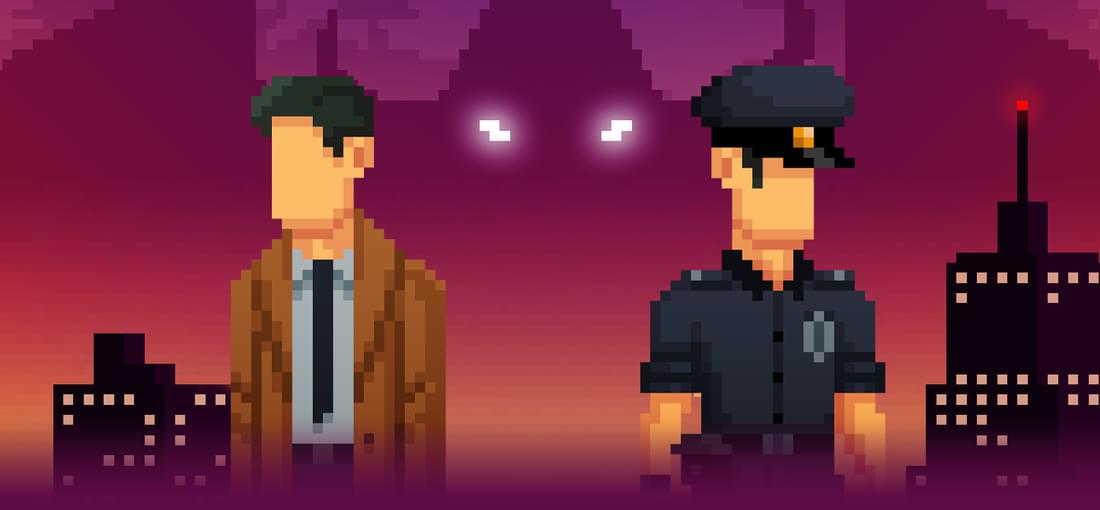
In ‘The Darkside Detective’, the final case ended with Officer Dooley being teleported to the Darkside, leaving players with a cliffhanger. ‘The Darkside Detective: A Fumble in the Dark’ continues the first game left off, with Detective McQueen searching for Dooley. You don’t need to have played the first game to enjoy ‘Fumble’, but it’ll certainly help. Like ‘TDD’, ‘Fumble’ is treated like a season of a TV show, with the overarching story being told over 9 cases or episodes (6 base cases + 3 free DLC cases). Given where things were left off, the first case of ‘Fumble’ is less funny compared to the others that follow. It just goes to show what a great comedy duo McQueen and Dooley make, with the former serving the setup and the latter delivering the punchline. The cases in ‘Fumble’ is longer than the ones in ‘TDD’, for better or worse. In a few instances, I thought the longer length hindered the cases’ pacing. This might also have been due to the few obtuse, less well-hinted puzzles. Yet, the game’s humour – especially when Dooley is back in action – helped balance things out. If you enjoyed the humour of ‘TDD’ (i.e., puns, self-referential laughs, middlebrow jokes, pop culture and sci-fi/fantasy satire), you’ll definitely like what ‘Fumble’ has to offer. I still love the earnestness with which McQueen and Dooley have in their investigation of the paranormal, and how it’s usually only they who take the strange happenings in Twin Lakes very seriously. I just finished the second DLC case, ‘One Flew Into the Cuckoo’s Nest’, and enjoyed it. There’s one more free DLC case on the way, but the release date hasn’t been announced yet. Will the last case be a cliffhanger or the end of the series? Regardless, I can only assume that it’ll be great based on what I’ve played so far. I’ve been having a lot of fun playing ‘Fumble’, so while this game may not be complete at this time, I still feel confident in recommending it to all fans of point-and-click adventure games.
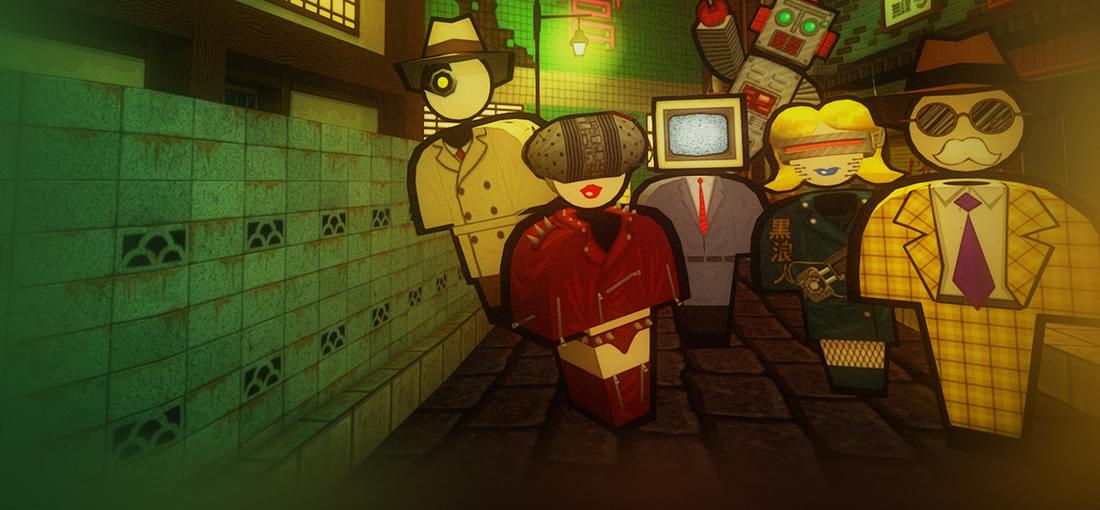
‘Jazzpunk: Director’s Cut’ is…weird. I went in not really knowing what it is or what to expect, and finished it not fully understanding what I’ve just played. That’s not to say this game is a bad game – it’s not. It’s just different and very strange. ‘Jazzpunk’ is a first-person adventure game with offbeat humour, and plenty of pop culture and computer technology references. In it, you play as Polyblank, a spy tasked with completing a series of 4 missions, interspaced with interludes. The missions and the puzzles within aren’t difficult at all. In fact, you’re told how to bypass each obstacle almost every time. The fun of this game is not really the espionage, but the exploration of your surroundings and interaction with anyone/anything that the game allows you to. In doing so, you may find yourself engaging in non-sequitur sidequests like wrestling a Randy “The Macho Man” Savage look-a-like and flicking a spider off a woman’s shoulder. I ended up spending close to 3 hours trying to find most, if not all, of these interactive moments. The game’s presentation is simplistic, with a 1950/60s aesthetic that makes me yearn for a more substantial spy game like ‘No One Lives Forever’. Not only does ‘Jazzpunk’ plays and feels weird, it also looks strange. It’s what I presume a hallucinogenic dream would be like. ‘Jazzpunk’ is a very niche game for a very specific audience, with jokes and allusions that may be over the head of some players. It’s weird and different enough to warrant checking out, just to see what the initial excitement was all about back in 2014. Given how its humour may not be for you, you may want to grab this game when it goes on sale.

I found ‘Leisure Suit Larry: Wet Dreams Don’t Dry’, the recent soft reboot of the ‘LSL’ franchise, to be rather good. The premise of Larry adapting to a time of political correctness, sexual liberalism, high technology, and social media was funny to me. Plus, there was a good mix of brain-tickling puzzles and raunchiness that I expect from an ‘LSL’ game. Naturally, I was excited for ‘Wet Dreams Dry Twice’. Just as ‘WDDD’ referenced the first ‘LSL’ game, ‘Twice’ has plenty of references to ‘LSL2’, and even ‘LSL3’ (e.g., marrying the island leader’s daughter, island resort, espionage, volcano). There’s even an obvious allusion to ‘Love for Sail’! Yet, the developers managed to take these familiar elements and make ‘Twice’ feel original. Compared to the previous game, ‘Twice’ is less raunchy, with fewer titillating and funny cutscenes despite having just as much immature adult humour and phallic imageries. The villain and many side female characters are sadly one-dimensional, except one who is more fleshed out in more ways than one. I suppose that’s to be expected when Larry’s objective is to find Faith, his love interest in ‘WDDD’. Yet, these flaws are offset by comparatively better designed puzzles, supported by clearly stated objectives and hints. I wasn’t stumped as often as in the last game on what to do next and how to proceed. Sadly, the overall collection of puzzles is uneven, much like the pacing of the game in the last quarter. Slotting in an unneeded minigame, padding out the game with – not one, not two, but three – annoying maze puzzles, and capping it all off with a repetitive puzzle don’t make for a strong finish. ‘Twice’ may be a slight step-down from ‘WDDD’, but it’s still a fun game for the most part. Despite my complaints, this game is nowhere as disappointing and divergent as ‘LSL2’. With ‘Twice’ tying up loose ends from ‘WDDD’ rather neatly, it’s worth checking out if you’ve already played the previous game and when it goes on sale.
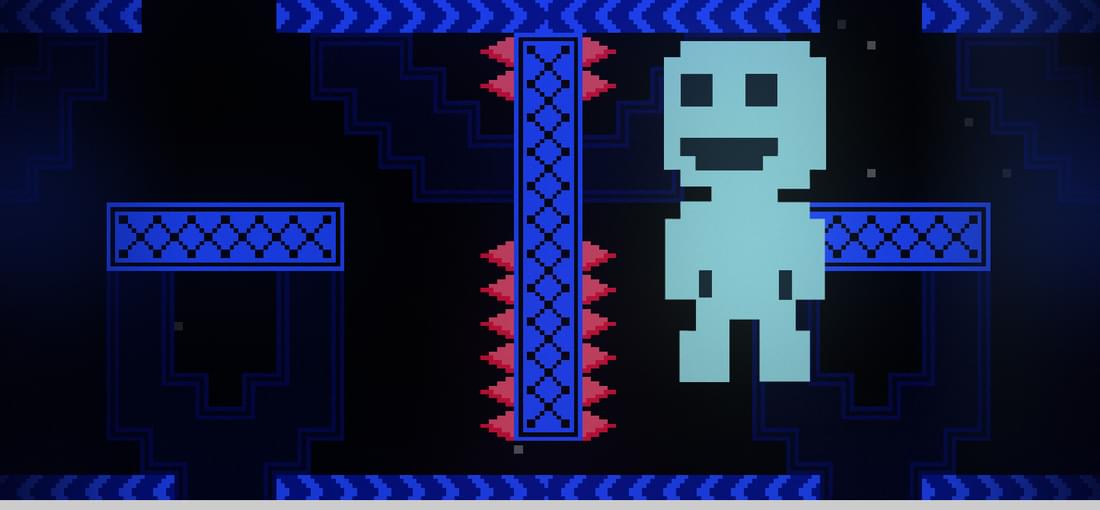
‘VVVVVV’ is not the type of game that I’d play normally. I’ve seen it on digital game store fronts many times, but paid little heed to it. But for one reason or another -- I don’t recall what it is now -- I recently took a closer look at this game. The attractive sale price certainly swayed me to give it a try, and I was pleasantly surprised by its balance of simple gameplay mechanics and thought-provoking platforming puzzles. In this game, you play as Captain Viridian, who is on a mission to locate your scattered crew members. While you don’t have any weapons or the ability to jump to help you negotiate the treacherous terrains, you can flip the direction of gravity. This special ability alone separates ‘VVVVVV’ from many other platforming games, demanding players to solve platforming puzzles in different ways. ‘VVVVVV’ is a game that requires well-timed, precise movements, and quick reflexes. Despite that, it’s also a forgiving game. There are plenty of checkpoints at which you can respawn after one of hundreds, if not thousands, deaths you’ll likely encounter on your first playthrough. As impossible as some puzzles may seem at first, you know there’s a solution that will get you from one end of the screen to another. Thankfully, there are accessibility options that can make the game easier. These include game speed adjustments and an invincibility mode. If at any point you get overwhelmed or impatient with a puzzle, you can tweak the game temporarily to help you proceed. Challenge seekers may scoff at these options, but they do make this game more appealing to casual gamers. ‘VVVVVV’ is fun indie game that will take about 2 to 3 hours to complete, and more if you seek additional challenges, collect all trinkets, or explore all areas of the map. It’s not a game that I’d expect myself to enjoy, but I did, and enough to recommend it. It’s definitely worth checking out, especially when it goes on sale.